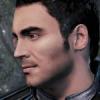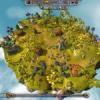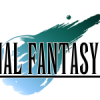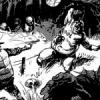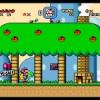Peter Molyneux’s Fable series is famous for a great many things.
There was the infamous promise of being able to plant an acorn and watch it grow in the first game, for example; or the slightly underwhelming - and truncated - ending of Fable III. But the loss of your dog in Fable II has gone down as one of the most memorable and emotionally affecting moments in recent gaming history.
Molyneux originally claimed that Dog was a revolution in gaming; like another developer, David Cage, Molyneux has long been interested in attempting to elicit an emotional response from his audience. Whether it be the creatures in Black & White or the now-aborted Milo and Kate, Molyneux’s goal is to make us truly care about the actions we take and their consequences on fictional characters. This philosophy is one that has come to define Fable II more than any other game in Molyneux’s career.
Your canine companion has several uses - he helps locate buried treasure, he has a use in some quests, and he strengthens the player’s emotional bond with the game. You can teach your dog tricks - how to shake hands, roll over or do a backflip. From beginning to end, Lionhead Studios make absolutely sure that you’re thinking about your dog as much as you are about your own progress through the central story.
With this in mind, it’s perhaps unsurprising that the ending of Fable II is often cited as one of the most upsetting moments in the medium alongside the death of Aerith in Final Fantasy 7.
Towards the end of the game the primary antagonist, Lucien, kidnaps three of your fellow heroes - Hammer, Garth and Reaver. His aim is to channel their essence into activating the Spire, a long-lost citadel that has the power to grant the wish of anyone who uses it. Lucien, driven insane with grief after the loss of his family, intends to use it to remove all chaos from the world and instill himself as ruler.
With the kidnapping complete, Lucien freezes you in place and gives the standard speech that all evil geniuses like to give. He then pulls out his gun and shoots you.
At least, he attempts to. Your dog, that faithful companion who has been by your side throughout the entire game, throws himself in the path of a bullet intended for your heart. As it tears through Dog, so too does your own heart feel ripped from your chest. Dog’s lifeless corpse falls to the floor and you feel winded. After having spent so long training him, playing with him and caring for him, the loss of Dog hits you hard. As anyone who’s had to bury a beloved pet knows, the grief you feel on losing them can be heart-rending. Dog may just be a collection of textures, polygons and AI routines but over the course of your playthrough he takes on a life of his own. He feels real, so losing him in such a callous way hurts.
The death of Dog caused an outpouring of grief and upset that Molyneux himself probably never anticipated, nor hoped for. Forum threads were written, emails were sent, angry tweets were launched. For all the mockery that Molyneux’s promises to make you care about your pet elicited before the game’s release, he ultimately succeeded in his objective.
Lionhead subsequently gave the option to resurrect him in the game’s Knothole Island DLC expansion and pet-lovers everywhere rejoiced, their grief transformed into a feeling of celebration that is, unfortunately, not possible in real life. But even if you resurrect your companion, you still remember the gut-twisting moment when you lost him.
Dog wasn’t quite the revolution that Molyneux hoped he would be, but his death did elicit an emotional reaction. Plenty of games attempt that; very few succeed. Fable II is an example of a game that succeeded, and Dog’s death is now cemented in gaming history as a result.




